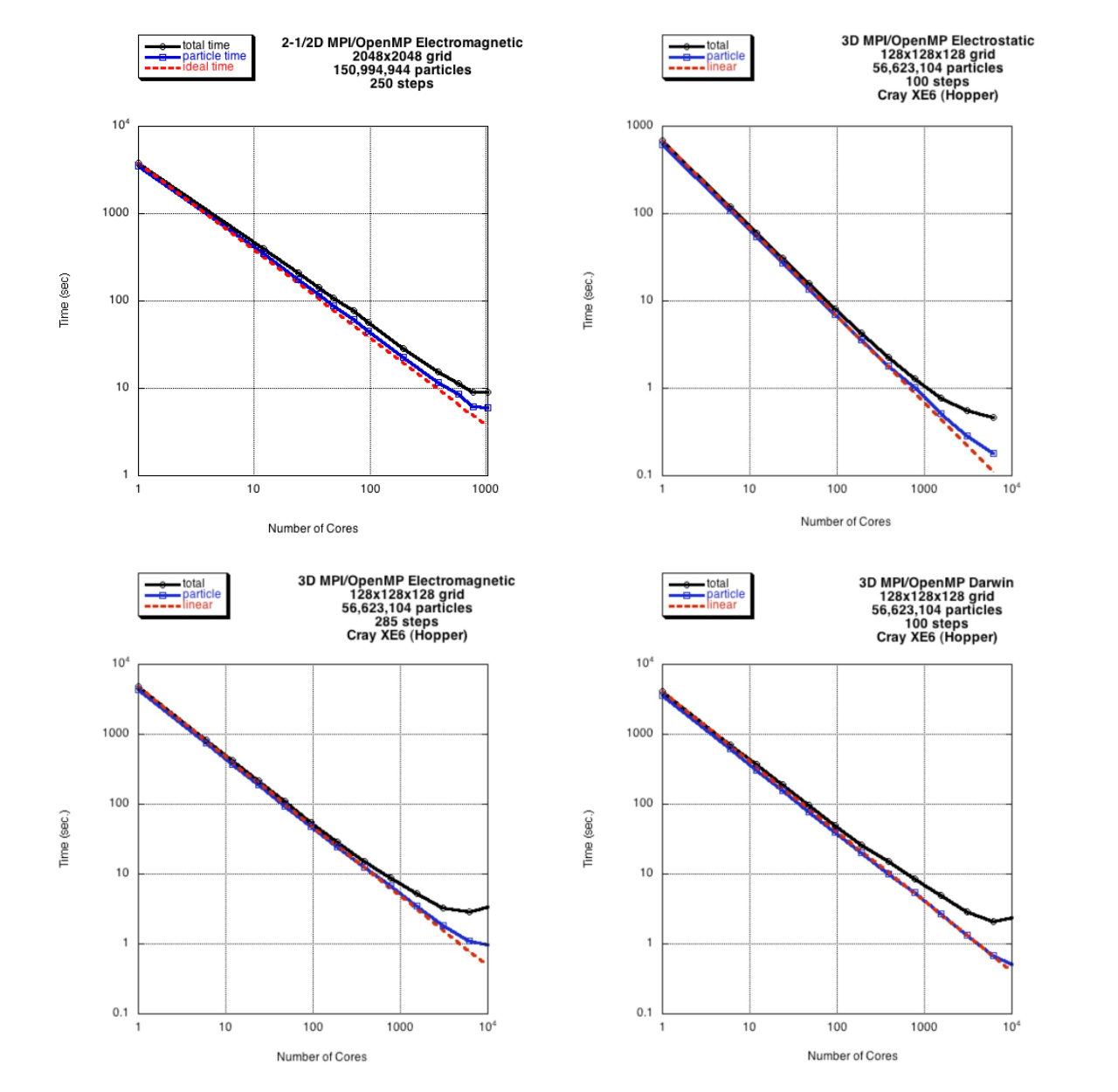These codes illustrate how to use a hybrid shared/distributed memory algorithm, with a tiled scheme on each shared memory multi-core node implemented with OpenMP, and domain decomposition connecting such nodes implemented with MPI. The algorithms are described in detail in Refs. [2-4].
For the 2D electrostatic code, a typical execution time for the particle part of this code is about 80 ps/particle/time-step with 576 processing cores. For the 2-1/2D electromagnetic code, a typical execution time for the particle part of this code is about 230 ps/particle/time-step with 576 processing cores. For the 2-1/2D Darwin code, a typical execution time for the particle part of this code is about 364 ps/particle/time-step with 576 processing cores. The CPUs (2.67GHz Intel Nehalem processors) were throttled down to 1.6 GHz for these benchmarks.
For the 3D electrostatic code, a typical execution time for the particle part of this code is about 110 ps/particle/time-step with 768 processing cores. For the 3D electromagnetic code, a typical execution time f or the particle part of this code is about 280 ps/particle/time-step with 768 processing cores. For the 3D Darwin code, a typical execution time for the particle part of this code is about 715 ps/particle/time-step with 768 processing cores. The CPUs (2.67GHz Intel Nehalem processors) were throttled down to 1.6 GHz for these benchmarks.
Electrostatic:
- 1. 2D Parallel Electrostatic Spectral code: mppic2
- 2. 3D Parallel Electrostatic Spectral code: mppic3
Electromagnetic:
- 3. 2-1/2D Parallel Electromagnetic Spectral code: mpbpic2
- 4. 3D Parallel Electromagnetic Spectral code: mpbpic3
Darwin:

Figure details (click to enlarge): Figure 1; Figure 2; Figure 3; Figure 4.
Want to contact the developer? Send mail to Viktor Decyk at decyk@physics.ucla.edu.
